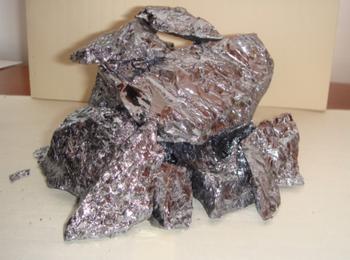 On March 28, Ma Haitian, deputy secretary-general of China Non-ferrous Metals Industry Association’s Silicon Division, said at Antech's 2013 Non-Ferrous Metals Market Forecasting Conference that “it is expected to be stimulated by the 'double reverse' incident and domestic expansion of applications. Polysilicon prices will rebound in a phased manner, but given that the polysilicon market at home and abroad is still in an oversupply situation in the short term, the price recovery is not expected to be large, and it is expected to recover from US$15-20/kg to US$20-25/kg.
On March 28, Ma Haitian, deputy secretary-general of China Non-ferrous Metals Industry Association’s Silicon Division, said at Antech's 2013 Non-Ferrous Metals Market Forecasting Conference that “it is expected to be stimulated by the 'double reverse' incident and domestic expansion of applications. Polysilicon prices will rebound in a phased manner, but given that the polysilicon market at home and abroad is still in an oversupply situation in the short term, the price recovery is not expected to be large, and it is expected to recover from US$15-20/kg to US$20-25/kg. It is understood that by the end of 2012, China's polysilicon production capacity will reach 190,000 tons/year, and production capacity will increase by 44,000 tons/year. Looking back at the domestic polysilicon supply and demand situation in 2012, the domestic polysilicon production was 63,000 tons, down 21.3% year-on-year; imported polysilicon 83,000 tons, up 28.2% year-on-year; photovoltaic demand was 149,000 tons, up 5% year-on-year. "Although the overall performance of the market is in short supply, market prices have continued to decline due to the large number of digested stocks and pessimistic market demand," said Ma Haitian.
Ma Haitian's view can be confirmed by the polysilicon price trend in 2012. Statistics show that in 2012, the average domestic spot price of polysilicon was only 158,000 yuan/ton, down by more than 70% year-on-year. In 2012, the mainstream price of polysilicon in the country fell from 21 million yuan/ton to 120,000 yuan/ton (including tax), a drop of 43%. At the same time, the price of imported polysilicon quickly dropped from US$30/kg to US$15.35/kg, a decrease of 49%.
For the reasons for this situation, Ma Haitian analyzed that this is closely related to negative factors such as the economic downturn in the United States and Europe, and the launch of a negative reaction to China's PV products.
However, Ma Haitian also pointed out that due to the improvement of domestic subsidies for photovoltaic power generation and other favorable policies, the demand for polysilicon in the domestic photovoltaic market will continue to grow. Although foreign countries have conducted "double opposition" on China's photovoltaic products, the continuous increase in domestic photovoltaic applications can completely make up for the lack of foreign markets.
"At the same time, with the technological advancement of the photovoltaic industry and the rising price of traditional energy, photovoltaic grid prices are already just around the corner. After parity Internet access, there will be an outbreak of demand for the photovoltaic industry and the rapid growth in demand for polysilicon." Haitian predicts that the global PV installation capacity in 2015 will exceed 40 GW; before 2020, PV parity Internet access will achieve high-price electricity in regions (such as developed countries in Europe, etc.), and the global PV installation capacity will exceed 100 GW; by 2050, Photovoltaic power generation is popular all over the world, and photovoltaic installation capacity will exceed 1000GW.
For the future market price of polysilicon, Ma Haitian believes that the price trend may gradually decrease after a quick rebound, and then gradually recover, and then continue to repeat.
"In the long term, with the large-scale industrial production and technological progress, the price of long-term polysilicon is bound to gradually decline. The industry expects that the polysilicon cost price may fall below $15/kg in the future," said Ma Haitian.
Paper Dispersion Agent
Paper dispersion agent is a kind of high molecular weight Polyacrylamide/Polyelectrolyte/PAM with short dissolving time.
During the paper making process, it is used as dispersing agent to prevent fiber agglomeration and improve paper evenness. It is suitable for toilet paper, paper napkin and other daily used papers.
It can promote the dispersion of fiber and perfect the paper appearance by adding small quantities dispersant in paper making process; it can also improve the pulp evenness and paper softness, even toughness. It is widely used in various toilet paper, napkin paper, white towel paper, cultural paper, and bleached tissue paper and newsprint process.
Paper Dispercent Agent,Polyacrylamide Polymer,Dispersing Aid For Papermaking,Dispercent Agent For Pulp
SHIJIAZHUANG AQUAENJOY ENVIRONMENT CORPORATION LIMITED , http://www.aquaenjoy-chem.com